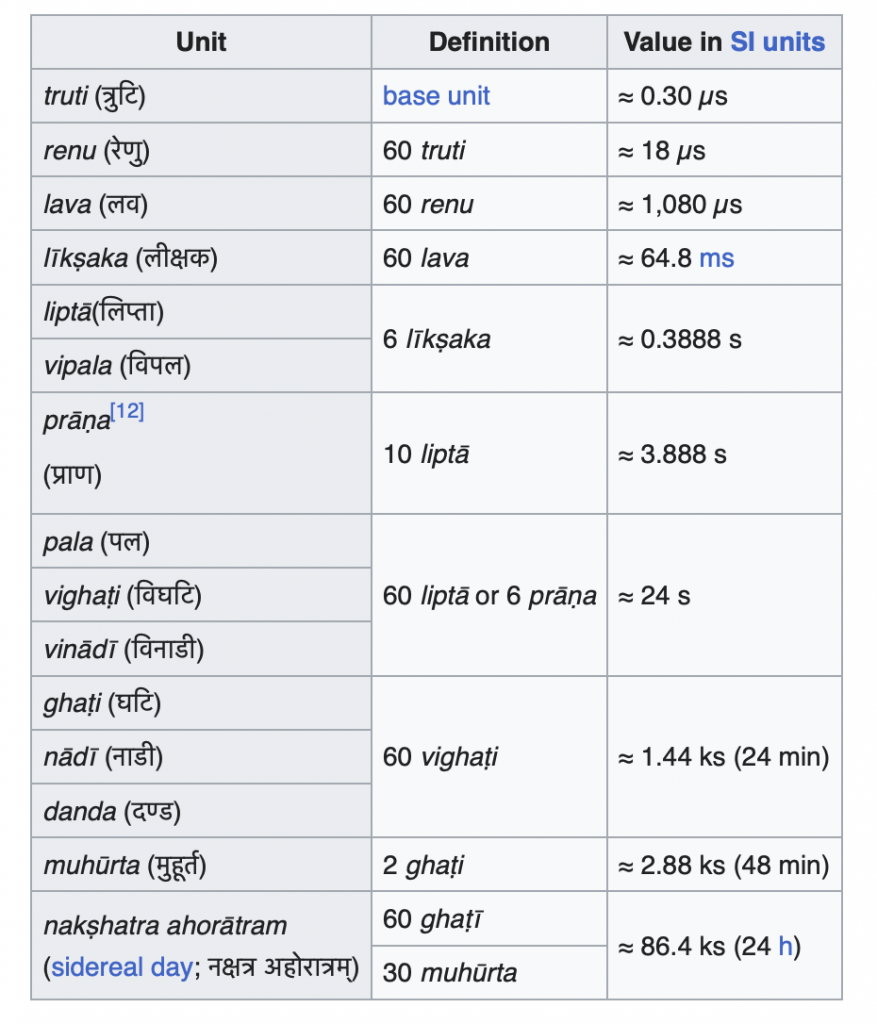The Noble Prize for Physics for the year 2023 goes to Agostini Krausz and L’Hullier for their contribution to attosecond physics. An attosecond is one billionth of a nanosecond. The Nobel laureates developed experiments to produce ultrafast laser pulses, which can be used to understand the world at really minute scales with applications across chemistry, biology and physics.
Here is the concept of time in ancient Bharat:

Imagine the level of interest and intuition that the ancients had – no access to big tech, yet made such meaningful insights into the fabric of reality. And we hardly learn about this.
Like the much-celebrated Pythagoras Theorem, that appears in the Baudhayana Shulba Sutra around 8th century BCE – it contains a list of Pythagorean triples and a statement of the Pythagorean theorem, both in the special case of the isosceles right triangle and in the general case, as does the Apastamba Shulba Sutra (c. 600 BC). This, hundred of years before Pythagoras!
History is written by the victors. Well, yes, but not if your enemies are still alive and havea lot of time on their hands to edit Wikipedia.
Elon Musk
See you tomorrow!
